PyCharm vs VS Code -- which is best for Python in 2024?

Choosing the right Integrated Development Environment (IDE) is crucial for Python developers. This step will help boost productivity by streamlining workflow processes and enhancing the coding experience. Important tools that the IDE should possess include code completion, debugging, and versioning integration, among others. Hence, it is possible for the developer to achieve maximum efficiency. This article analyzes the pros and cons of the two top options.

Discover how at OpenReplay.com.
Because of their widespread usage and numerous features, PyCharm and Visual Studio Code (VS Code) have become popular options. Highly recognized in the developers’ community, PyCharm is famous for its strong Python-specific tools, while VS Code is famous for its extensiveness and flexibility.
This article aims to provide a comprehensive comparison between PyCharm and VS Code, helping you make an informed decision about which IDE best suits your Python projects in 2024. By examining their features, performance, user experience, and pricing, we aim to highlight the strengths and weaknesses of each IDE, guiding you toward the best choice for your specific needs and preferences.
Overview of PyCharm and VS Code
PyCharm, developed by JetBrains, is a dedicated Python IDE recognized for its powerful capabilities and complete tools tailored specifically for Python development. It is available in two editions: Community (free) and Professional (paid). PyCharm is known for its intelligent code assistance, refactoring skills, and seamless integration with numerous frameworks, making it a favorite among developers.
VS Code is a very extensive code editor developed by Microsoft that supports programming languages like Python and many others using its many extensions. It is free and open source, which is why many developers choose to adopt it. It is fast, customizable, and has a huge extension market that allows programmers to customize the editor to suit their needs. While lightweight, VS Code offers powerful debugging, version control, and IntelliSense features, making it easy for developers.
Features Comparison
When choosing an IDE, the features must be considered. PyCharm and VS Code offer excellent features that simplify coding, debugging, and project management. This section summarizes the essential attributes of both IDE, comparing and contrasting set-up processes, interfaces, version control integration, plugins, and debugging to help developers make informed decisions.
Setup and Installation
PyCharm gives you two simple options: You can either install the free community edition for your essential needs or pay a fee for the professional edition, which comes with added features. The installation wizard assists you during setup by changing the default directory where all files are saved and creating a shortcut on the desktop.
Begin installation of PyCharm by downloading the installer from JetBrains PyCharm download page. Select an installer compatible with your operating system, either Windows, macOS, or Linux, and choose one of the two editions: Community Edition (free) or Professional Edition (paid). When the download is complete, execute the installer. To install PyCharm on Windows, just run the .exe file and follow the instructions on your screen. If you are on macOS, open the .dmg and drag it to your Applications folder. You can extract the tar.gz file and run the pycharm.sh file from the bin directory for Linux. The PyCharm installation guide is available here.
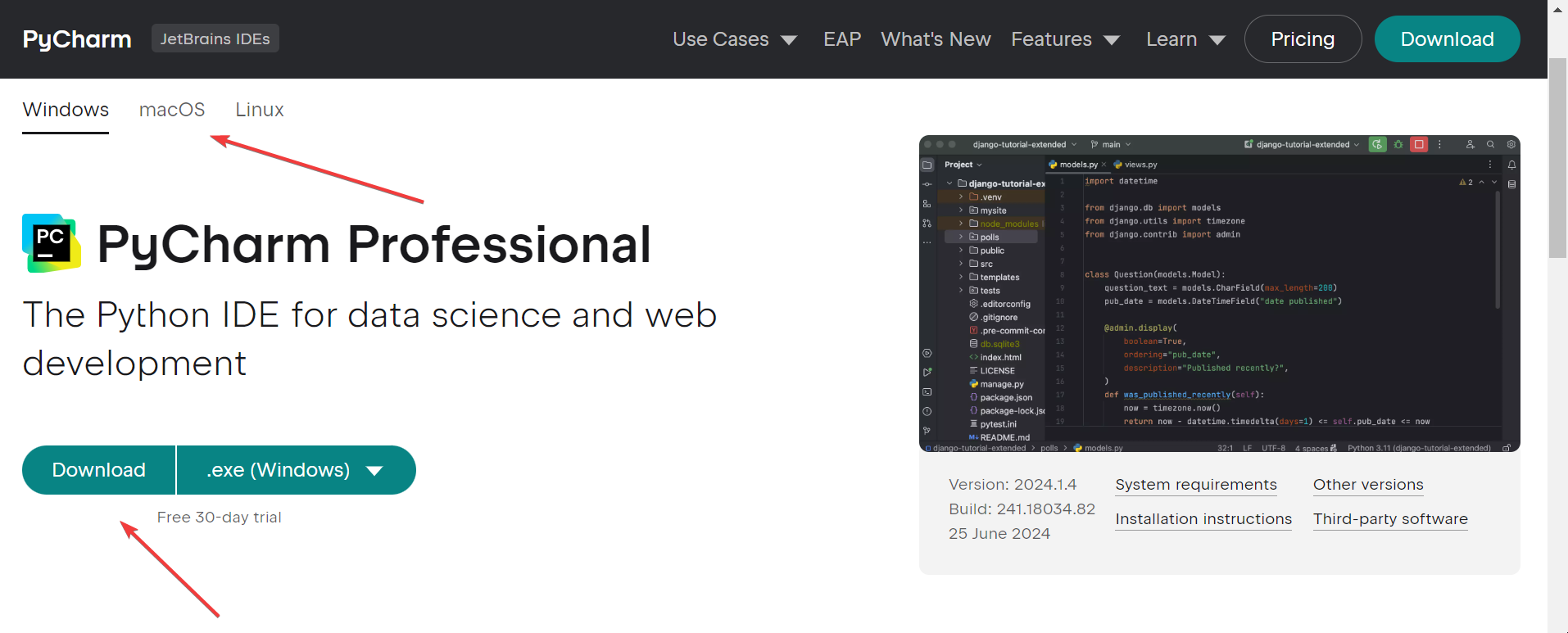
VS Code can be easily downloaded for free from the official website. Once installed, you can configure the editor to your needs by adding extensions. Installation of VS Code is a straightforward task that requires a few configurations to run smoothly.
Download the VS Code installer from the VS Code download page. There are installers you can choose depending on the operating system you are using, such as Linux, Windows, or macOS. Begin the installation by running the installer once it is downloaded. On Windows, run the .exe file and follow the installation instructions. Unzip the .zip file on macOS and drag the Visual Studio Code.app into the Applications folder. Using Linux, you can get the .deb or .rpm packages or check the specified instructions. The VS Code installation guide is available here. Visit here to start using Python on VS Code after installation.
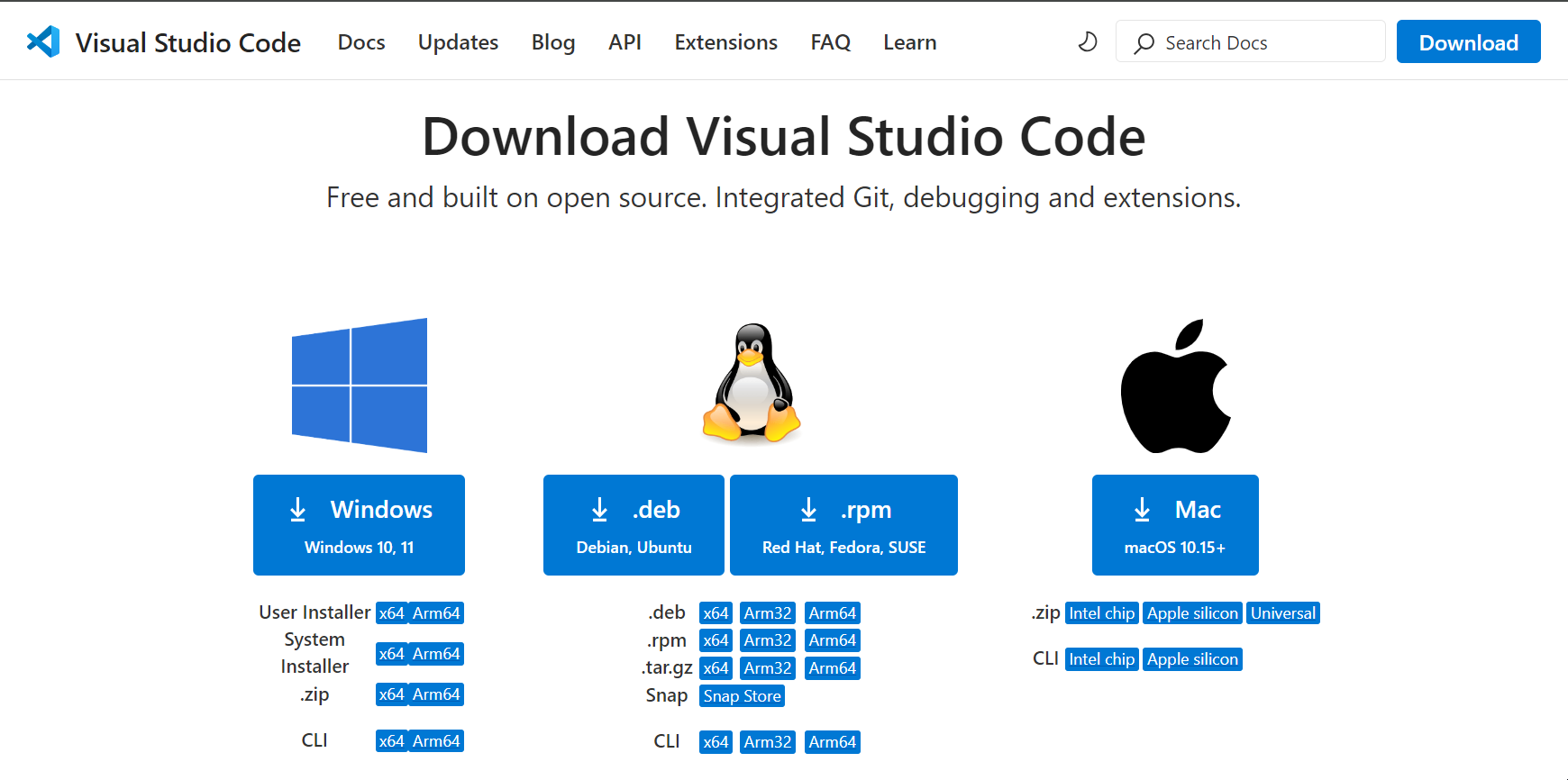
User Interface
PyCharm has a feature-rich interface that significantly enhances productivity. Its layout includes tool windows for project navigation, debugging, and version control. It also comes with several themes with customizable key bindings. However, the interface can feel overwhelming to beginners due to its many options and tools.
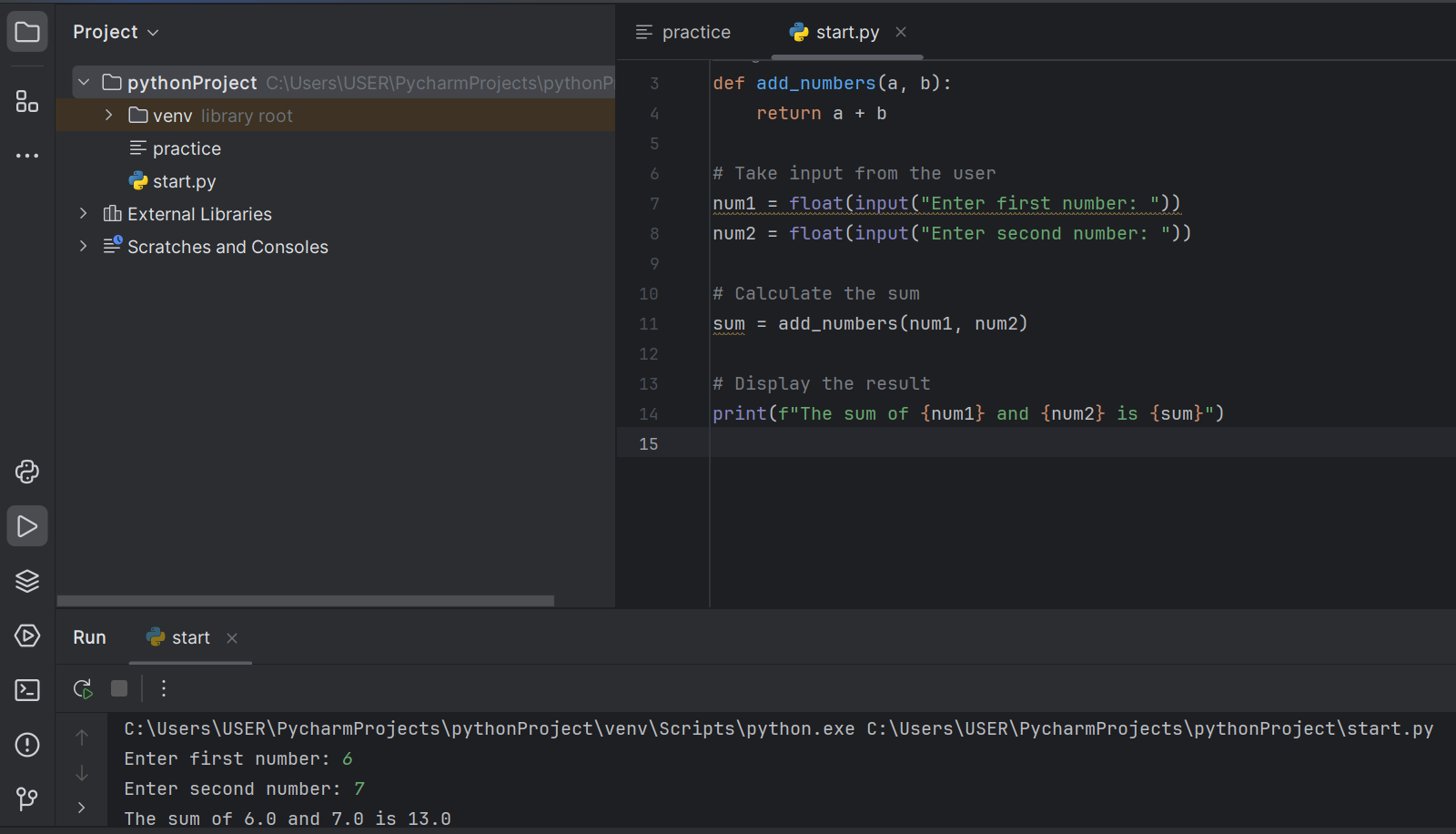
New users would find VS Code’s clean default layout hard to resist, but experienced developers could use the extensions to customize the environment. Its interface has an integrated terminal, a sidebar for project files, and a user-friendly command palette. VS Code’s clean, minimalistic interface can be customized as much as one wishes.
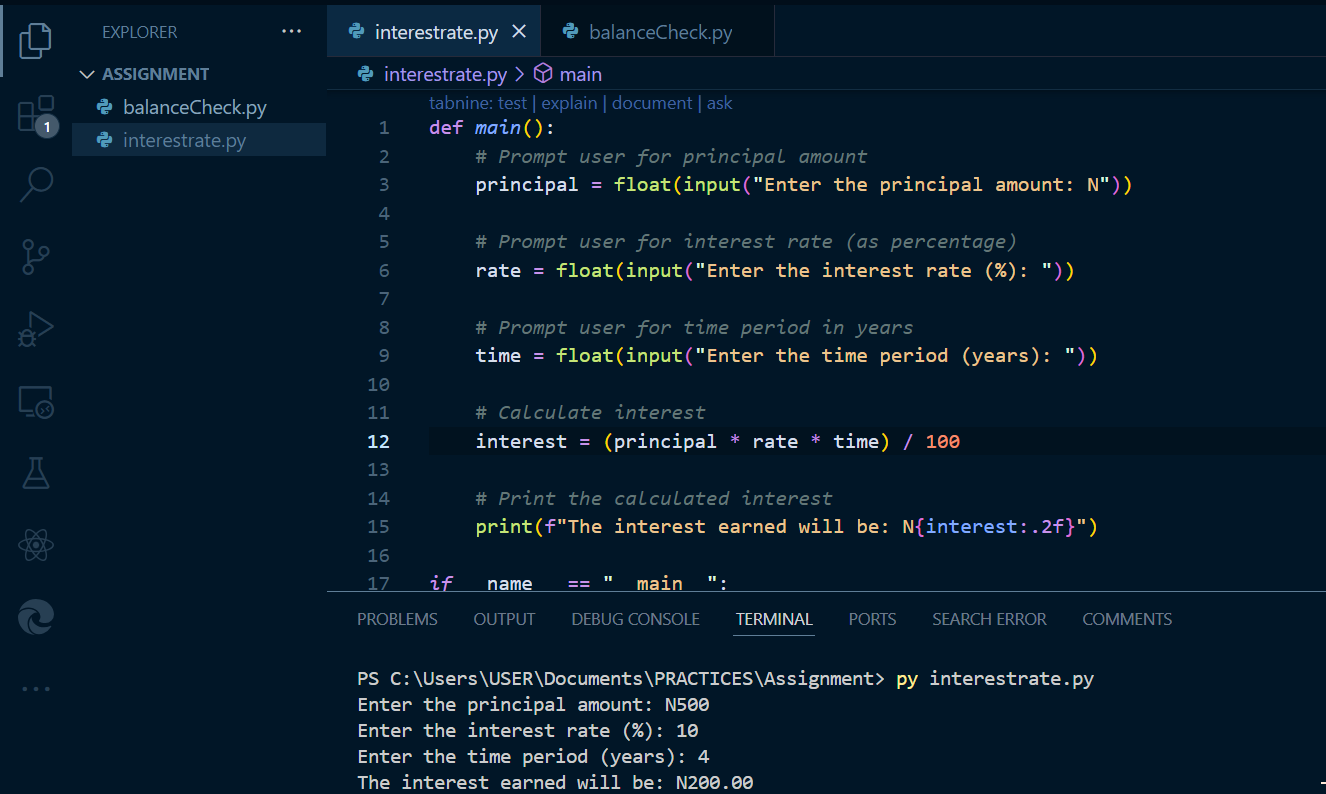
Version Control Integration
PyCharm makes it easy to use version control systems such as Git or Mercurial. The tool performs tasks in version control such as viewing, comparing versions of files for differences, and resolving merge conflicts.
VS Code is great at version control. It has a source control view that lets you manage your Git repositories within the editor. Some of the essential features include staging changes, committing and pushing directly, and branch management that makes it possible to create, edit, or delete branches. When there is a conflict in the code, it is detected in the editor window where this joint resolution takes place from there you can access extensions such as GitLens, which reveals detailed information about a mistake including who committed it and at what time.
Extensions and Plugins
A considerable selection of plugins is there from which you can boost the functionality of PyCharm. These add-ons include various plugins, making them more powerful. Users can browse, install, and update each of these directly from the IDE as PyCharm allows its users to install or update their software using its built-in plugin Manager. PyCharm’s functionality is collectively extended by these plugins in a powerful and versatile manner, providing additional language support, code quality tools, and productivity tools. To quickly access the plugin manager in PyCharm, press Ctrl+Alt+S.
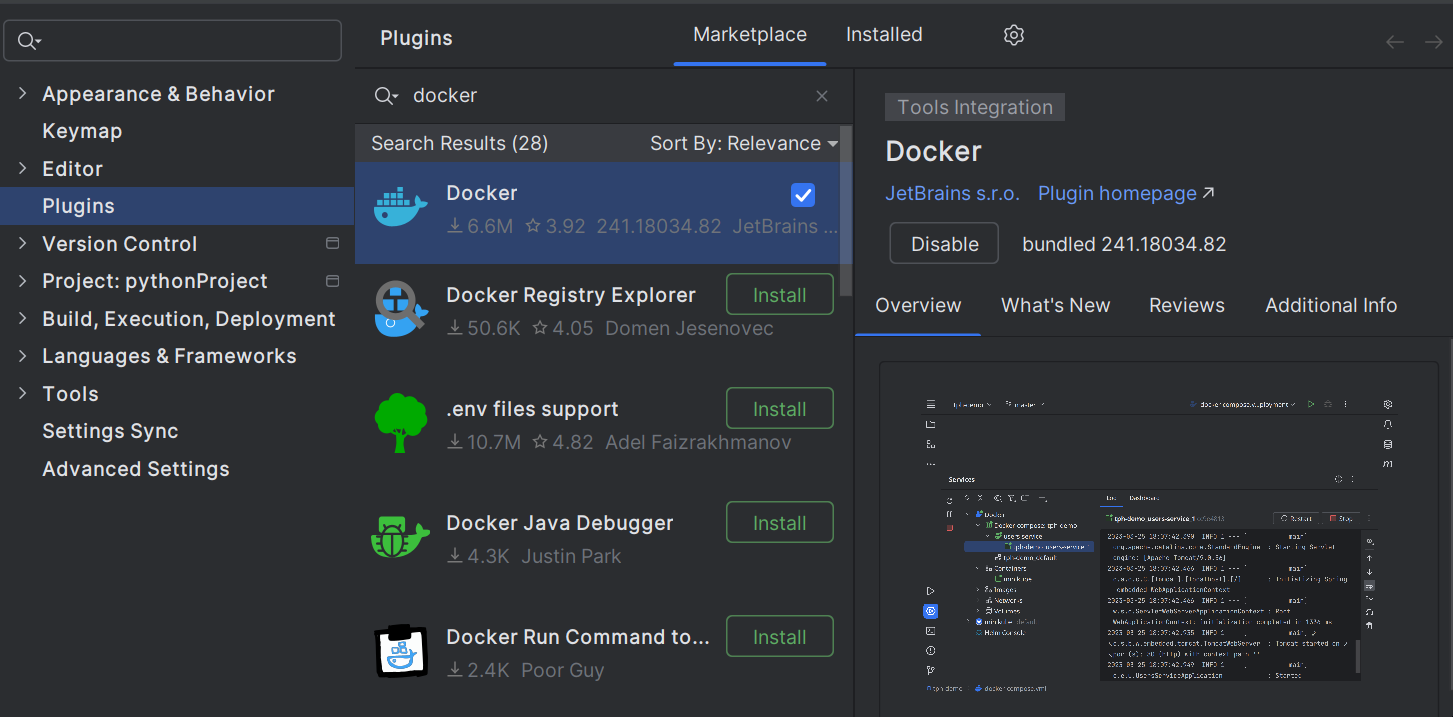
VS Code is widely renowned for its level of customization through its vast marketplace of extensions. This makes it possible for Python programmers to adjust this editor according to their likes. By adding language support, debuggers, and various themes, the Extensions view in VS Code becomes an invaluable tool to different stakeholders as they can easily install or remove them from the system as desired. Basic Python extensions for development purposes include the Python extension by Microsoft, Pylint, and Jupyter.

Debugging
PyCharm is famous for its advanced debugging features that simplify Python code troubleshooting. The IDE features a user-friendly visual debugger, which makes it possible for developers to put breakpoints at any point within their program while going through lines step by step or checking current values of variables and expressions. In addition, it has conditional breakpoints that help you stop execution, given certain conditions are met. The debugger has powerful features, which include viewing the call stack, tracking runtime variables, and evaluating expressions on the fly; this helps one to quickly identify and solve any problems.
One of VS Code’s main strengths is its powerful debugging capabilities, especially as augmented by its Python extension. The debugger, built into VS Code, helps developers set up breakpoints by stepping into their code to look around inspecting all given expressions or variables easily instead of using other tools like the terminal window. Inline breakpoints, conditional breakpoints, and logpoints are all supported by VS Code, which makes it possible to have control over how code is executed.
Performance and Resource Usage
Several key factors come into play when comparing PyCharm and VS Code in terms of performance and resource usage.
Startup Time
PyCharm is a software well-known for having many features. However, it is also known for having a longer startup time than lightweight editors like VS Code. The reason why this is is because PyCharm loads many kinds of plugins and features at once when it initializes.
VS Code is known for its quick launch time. It loads swiftly even when there are many installed extensions. Because it is lightweight, developers can almost immediately start working once they have launched the app.
Memory Usage
Due to having more features, PyCharm often uses up more memory than VS Code. This tendency is more pronounced when working with bigger projects or using several plugins.
VS Code has a reputation for using memory effectively, it uses fewer system resources than PyCharm. Therefore, developers with machines that have smaller RAMs or slow processors are best suited to using it.
Speed
PyCharm can provide excellent responsiveness and a pleasant user experience when it fully loads. It has several tools and plug-ins that could enhance complicated development processes, even though it may take a while for them all to load initially.
VS Code is very fast and responsive while you code because it is not heavy and has optimized performance. It is the ideal tool for fast iterations and collaborative coding as it effectively does things like code editing, debugging, and extension management.
Considerations
- Project Size and Complexity: For large-scale Python projects requiring extensive tools and integrations, PyCharm’s comprehensive feature set may justify its higher resource usage and startup time.
- Resource Constraints: If you prioritize speed, less resource consumption, and a fast start-up then it would be better to consider VS Code because it is lightweight, especially for hardware that is not as powerful.
- Personal Preference: Ultimately, your specific development needs, workflow preferences, and resources available on your development machine lead you to choose PyCharm or VS Code based on performance.
By considering these factors—startup time, memory usage, and speed—you can make an informed decision about which IDE best suits your Python development projects in terms of performance and resource efficiency.
User Experience
Picking an IDE is all about the general user experience which has an impact on how much work gets done effectively and satisfactorily. In this section, we shall explore ease-of-use, community, and support systems that are in place for PyCharm and VS Code. This will provide an insight into how both IDEs’ cater to their users and support them throughout their development process.
Ease of Use
PyCharm offers a Python-tailored user interface that is intuitive and feature-rich with, such as tool windows and Project Explorer, among others, enhancing productivity. In addition, it comes with a powerful debugger, intelligent code assistance, and integrated testing frameworks, among other built-in features. While these tools are excellent for advanced users, the comprehensive set of features available might make beginners feel some sort of interface overload that will result in a steeper learning curve.
Alternatively, VS Code comes with an uncluttered interface requiring simple customization that beginners can quickly become familiar with. Python professionals, on the other hand, can tweak it to suit their taste. Such qualities, simplicity, and ease of use are the reasons many developers choose it, and there is an extensive community to help them when they have problems.
Community and Support
PyCharm and VS Code are very popular because of their large audience and support systems. Those who use PyCharm will appreciate its detailed documentation and active community forums, where they exchange ideas and seek assistance. Additionally, PyCharm’s community edition has a large user base, contributing to a rich repository of resources and plugins.
VS Code is open-source so it has a massive and lively community that constantly participates in its development and extension marketplace, extensive documentation, numerous online tutorials, and active forums provide great support for people using this program. It also receives regular updates based on community feedback which ensures users stay informed on the latest features.
Pricing and Licensing
You should always consider the cost and licensing factors when choosing an IDE. This way, you can avoid wrong decision-making because you are working based on budget and project-specific requirements. The following part compares the pricing and licensing models applied by both IDEs while giving an idea of how much they cost and what types of licenses exist within them. All these considerations will serve as an essential guide in enabling you to make a sound decision concerning your financial and legal requirements.
Cost
PyCharm comes in two main versions: the free and open-source community edition and the paid professional edition. Advanced functionalities like full-stack development tools, scientific tools, and other database extensions are provided by the professional edition, thus making it perfect for professional developers and larger teams. The cost of the professional version differs depending on who you are (an individual vs company) and how long you plan to use it, with discounts being offered by those opting for an annual subscription or educational bodies.
However, VS Code is completely free and open-source, which entices programmers who want a robust IDE that is flexible and free of cost. It also has an extensive extension marketplace where they can modify their development environment and add more features without incurring other costs.
Licensing
The Apache 2.0 license is used to release PyCharm’s Community edition, and it gives the users the freedom to use, alter, and share the software without any constraints. Conversely, the Professional edition demands a subscription license for procurement, it can be purchased for personal, business, and discounted rates for students and educational institutions.
VS Code, released under the MIT license, is a very accommodating open-source license that allows for free use, modification, and even distribution of the tool. It is a cost-effective solution that addresses different development situations; hence, it is highly accessible and flexible to both personal and team developers.
Use Cases and Recommendations
There are situations where either PyCharm or VS Code could serve as an even more suitable alternative when the need comes for a preferred more suitable IDE option for Python. Below are some of the scenarios where PyCharm or VS Code might be the better choice.
When to Choose PyCharm
The PyCharm IDE is a comprehensive and feature-rich option for Python programmers and developers. It is particularly suitable for:
- Professional Developers and Large Projects: PyCharm professional edition has more sophisticated features like full-stack development tools, database support, and scientific tools, making it perfect for complicated and large-scale projects for professionals.
- Web Development: PyCharm has some really powerful features for web development, such as support for popular frameworks such as Django, Flask, and Pyramid.
- Integrated Tools and Plugins: If you prefer an IDE with a wide range of integrated tools and plugins that are specifically designed for Python development, PyCharm is a strong candidate.
- Educational Purposes: PyCharm’s educational tools and resources make it a good option for students and educators who need a comprehensive learning environment for Python programming.
When to Choose VSCode
VS Code is a flexible and lightweight code editor that is adaptable and extensive. It is mainly ideal for:
- Developers Who Work with Multiple Languages: VS Code’s extensive extension marketplace allows for seamless integration with a variety of programming languages and frameworks, making it an excellent choice for developers who work with multiple languages.
- Quick and Lightweight Development: If you’re looking for an efficient, versatile tool that performs well and consumes fewer resources, you should consider using VS Code. You’ll find this lightweight editor to be well-suited to quick coding sessions and smaller projects.
- Customization and Flexibility: VS Code’s highly customizable interface and a vast array of extensions allow developers to tailor the editor to their specific workflow and preferences, making it suitable for both beginners and experienced developers.
- Collaborative Coding: Real-time collaborative coding can be enabled with features such as Live Share, meaning that VS Code is an excellent option for groups of people and remote developers who require more than one person to work jointly on a given project.
- Free and Open Source: If budget constraints are a concern, VS Code’s completely free and open-source nature provides a powerful development environment without any cost, making it accessible to a wide range of users.
Ultimately, you should go for PyCharm if you require an all-inclusive IDE, particularly one made for Python development, that can handle huge projects. Opt for VS Code if you would rather have a flexible code editor supporting most programming languages with several extensions, allowing quick development and promoting collaborations.
Conclusion
When it comes to Python projects, choosing between PyCharm and VS Code depends on what you need. PyCharm is a strong and Python-oriented IDE with a lot of tools and plugins that are good for professional developers handling complicated projects. Meanwhile, VS Code is lightweight and allows you to personalize it greatly, it is perfect for any person who deals with several programming languages as it gives room for speed and flexibility while at the same time enabling collaboration.
Additional Resources
Here are some popular tutorials and courses on YouTube, Udemy, and other platforms for learning PyCharm and VSCode:
YouTube Tutorials:
- PyCharm:
- Getting Started with Pycharm
- Pycharm tutorial by Amigoscode
- VS Code:
- Visual Studio Code - Crash Course for Beginners by freeCodeCamp
- How to set up Python on Visual Studio Code by Kenny Yip Coding
- Python Tutorial for Beginners with VS Code by Dave Gray
Udemy:
- PyCharm:
- Master Pycharm IDE | Become a Productive Python developer
- PyCharm Mastery: From Code Creation to Web Applications
- VS Code
- Python For Beginners Crash Course Using VS Code
- Python Programming Complete Beginners Course Bootcamp
Gain control over your UX
See how users are using your site as if you were sitting next to them, learn and iterate faster with OpenReplay. — the open-source session replay tool for developers. Self-host it in minutes, and have complete control over your customer data. Check our GitHub repo and join the thousands of developers in our community.



